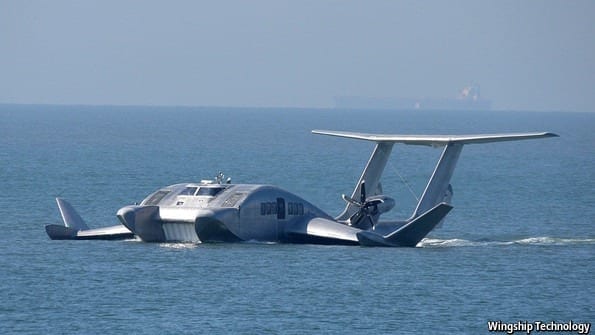
On a clear day, Per Granquist cannot see forever. But from his perch inside the airport control tower here, he does have an unobstructed view of the future.
The big picture is provided from a 33-foot mast where a gray turret holds an array of digital video cameras, communications antennas, sensors and microphones — a setup that resembles a cross between a space-age dovecote and a prison guard tower. The system is meant to collect and integrate information of the sort that Mr. Granquist, 40, has been providing with his own eyes and ears as an air traffic controller for the last 17 years at this small airport in northern Sweden.
The information from this array, though, is being sent elsewhere — beamed by fiber-optic cable to a windowless room of another airport, 100 miles south, in the slightly larger town of Sundsvall.
The system is still in test mode, but the rest of the global commercial aviation industry is watching closely. Early next year, Mr. Granquist and a handful of his colleagues expect to move to Sundsvall. And from there, they will begin “virtually” guiding the half-dozen or so daily flights in and out of Ornskoldsvik.
Ornskoldsvik is about to become the world’s first remotely controlled airport.
“At first it seemed a bit weird,” Mr. Granquist said of his training on the new system.
In Sundsvall, instead of surveying the airport through plate-glass windows, he will sit before a semicircular wall of more than a dozen 55-inch liquid-crystal displays.
“But after two weeks,” Mr. Granquist added, “it really feels no different from sitting here.”
Carved from an Arctic pine forest along Sweden’s fjord-studded eastern coast, Ornskoldsvik might seem an unlikely setting for a potential aviation revolution. But over the last several years, officials from dozens of countries have made their way down the airport’s rutted gravel road and past the yellow moose-crossing signs to get a firsthand look at technology that many expect will eventually transform the way air traffic is managed worldwide.
It is a concept that experts say has uses not only for the world’s out-of-the way places but could also enhance efficiency and safety at sprawling urban airports where increasing air traffic places ever greater demands on human controllers.
“I have little doubt that this is the next big thing for our industry,” said Paul Jones, operations manager at NATS, which provides air navigation services at Heathrow and a dozen other British airports.
The Latest on: Remotely controlled airport
[google_news title=”” keyword=”remotely controlled airport” num_posts=”10″ blurb_length=”0″ show_thumb=”left”]
via Google News
The Latest on: Remotely controlled airport
- Flashback Friday: Remote-controlled Airplane Conteston May 10, 2024 at 5:02 am
In this week's Flashback Friday, we're flying back to June of 1991, when the people of KELOLAND hosted their remote-controlled airplane competition ...
- Airport trust awards contract to build new air traffic control toweron May 9, 2024 at 6:05 am
Work on the project is expected to begin in the fall, and it's expected to be operating in the spring of 2027.
- Kuressaare Airport traffic control now organized remotely from Tallinnon May 8, 2024 at 9:47 pm
From Wednesday, the air traffic control of flights landing at and taking off from Kuressaare Airport on Saaremaa is being conducted remotely at Tallinn Airport, rather than at the regional airport ...
- CCTV captures car flipping into the air after losing controlon May 8, 2024 at 4:05 pm
CCTV has captured the moment a vehicle flipped into the air and crashed in Arizona. During military drills in the South China Sea, US and Philippine forces with the support of Australian air ...
- Newly surfaced video shows moment Jets cornerback Brandin Echols loses control of sports car at 84 mph, runs motorist off road in horrifying crashon May 5, 2024 at 3:02 am
A newly surfaced video shows the stomach-churning moment that New York Jets cornerback Brandin Echols loses control of his Dodge Charger Hellcat at 84 mph and runs a hapless motorist off the road, ...
- Remote Tower for Multiple Airportson April 25, 2024 at 11:49 am
Within the European research project ‘PJ05 Remote Tower for Multiple Airports’ DLR ... to investigate how a single air traffic controller can control not just one, but multiple airports.
- Swedish research project makes several advancements toward the autonomous airport of the futureon April 24, 2024 at 5:17 pm
responsible for the remotely controlled air traffic control tower in Sundsvall. The number of drones in society has exploded in recent years, posing a new challenge for airport personnel. Therefore, ...
- Duluth airport to replace traffic control tower — the third-oldest in USon April 11, 2024 at 2:17 am
DULUTH — Local airport officials have yet to secure all the money needed to replace an outdated air traffic control tower, but the project simply can’t wait any longer. “After 70 years ...
- Best home automation systemon July 5, 2023 at 6:55 am
You're on your way to work or the airport, and you can't remember whether ... subscribers already use their phone or tablet to remotely control some of their home, and almost 70 percent of ...
- Pushing Tin Remotely: The Start Of Flight Control In The Cloudon September 3, 2018 at 9:34 pm
The subject airport is the Northern Colorado Regional ... world country underbidding all the other flight control companies to provide remote services? We figure one of these will happen if ...
via Bing News








